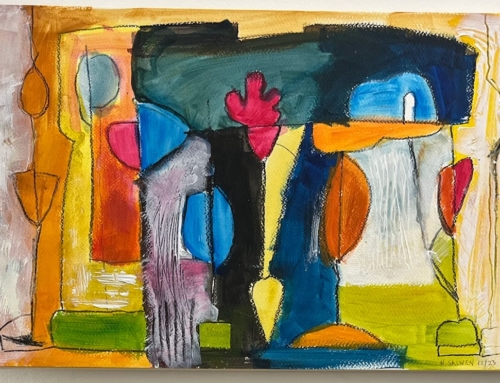“For those who would ask, ‘… and just how does art benefit my business?’, I would offer, ‘If your business has important, pioneering work to do, then develop artful capabilities in your associates just as well as technical skills, else you’ll work at half-strength at best, and risk losing all the benefit of their passion.’ Now, there is a connection between art and the bottom line.” –Albert Gibson, R&D Manager, U.S.-based Multinational Food & Beverage Company
 The business environment and the creative arts are often perceived as completely separate. Businesses are thought to exist primarily to make a profit, while making art is often seen as an optional luxury.
The business environment and the creative arts are often perceived as completely separate. Businesses are thought to exist primarily to make a profit, while making art is often seen as an optional luxury.
But many businesses — including Google, GE, Intel, Toms of Maine, as well as the U.S. Navy — have discovered that bringing creative arts into the workplace is more than a fun distraction or of- fice party exercise. Art-making — be it music, visual or performing arts — helps workers “think outside of the box” and become more innovative, motivated and cooperative at work. This much-needed engagement is invaluable in today’s competitive and ever-changing business environment.
Dissatisfaction in the workplace
According to a recent Gallup Poll of the “State of the American Workplace Report,” 70 percent of U.S. workers say they are dissatisfied with their jobs and don’t feel emotionally connected to their workplace. Studies have shown that disengaged employees are less productive and reliable, spread an atmosphere of discontent, and are bad for an organizations’ PR.
Can art-making help?
In an article in Fortune Magazine, “What Entrepreneurs Can Learn From Artists,” author Tim Leberecht, CMO of global design and innovation firm, Frog, writes that the “art” of business has become more important as the “science” of business has grown. “Like artists, innovators must cultivate creative habits to see the world afresh and create something new.”
In very much the same way that children learn through play, the creative arts teach adults how to learn and open their minds. The creative process reminds us of what it feels like to be human, and to reconnect with our sense of creativity, exploration, inspira- tion and mastery. When we access a business team’s creative side we tap into the whole person. This helps to bring a wider range of the employees’ talents to the table, and even help them better realize the company’s mission.
Arts activities bring insight, skills and solutions
As a music workshop leader who has worked with businesses and organizations, I have seen people make important connections when they are involved in the act of creating music together, both on individual and group levels.
Creative arts activities also offer a platform for communication among members of a group that is like no other; engaging in collaborative arts activities opens a window into preexisting group dynamics while offering alternative solutions to problems.
For example, I sometimes lead an activity where participants create rhythm patterns using sticks (see photo, right). We first create a pattern as individuals, then in pairs, and finally in larger groups. Throughout this process we ask questions of participants, such as: Were you surprised by who emerged as leaders? Were you a leader or follower? Did you feel that your suggestions were heard and welcomed by the group? What tools did your group use to come together to solve any problems in the short time frame you were given?
The answers to these, and other, questions reveal a wealth of information about a group’s dynamics, individuals’ work styles, and how the group solves problems together. This insight is in- valuable for managers to learn about their team, and for teams to learn about themselves.
Most importantly, what emerges from these creative exercises has power because what is discovered is concrete and real, rather than abstract or theoretical. What is learned can be immediately applied to how the team functions when at work. Plus, the arts-based learning process is incredibly fun!
So be it music, visual arts or theater experiences … choose art. Because creative play can have the power to transform your business.






Leave A Comment